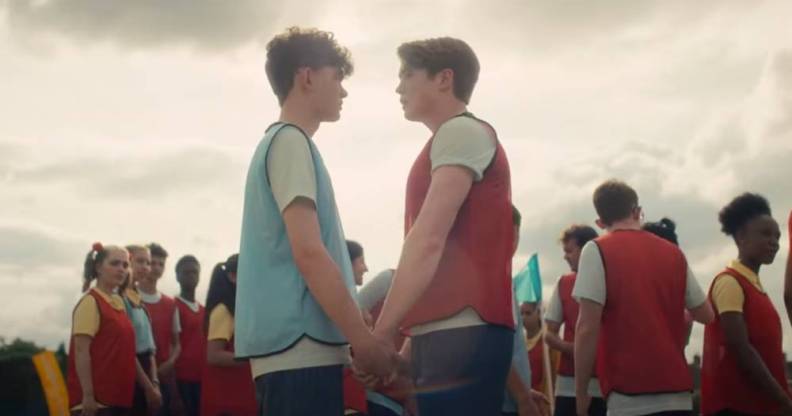Heartstopper fans are sharing ‘their Heartstopper moment growing up’ and it’s a blast from the past

Heartstopper is one of Netflix’s biggest LGBTQ+ hits. (Netflix)
Fans are sharing their ‘Heartstopper moments’ on social media and it’s a journey through some iconic LGBT+ moments in TV and film history.
Heartstopper has captured the hearts of fans across the globe, and it’s unsurprising given the amazing, joyful story filled with honestly the greatest characters. The Netflix LGBT+ drama follows the developing relationship between openly gay teen Charlie (Joe Locke) and his friend-slash-crush-slash-eventual boyfriend Nick (Kit Connor) as they navigate their blossoming romance.
Needless to say, the coming of age drama has been praised for having much needed LGBT+ representation, which is helping an entire generation of queer youth feel seen in the media they consume.
But for those of us who grew up in a different era of TV, on-screen LGBT+ representation was a bit harder to come by. Meaningful queer characters and stories were fewer and further between just a few years ago than they are today.
So people have flocked to social media to share their ‘Heartstopper growing up’ moments, and it’s truly nostalgic.
Honestly, the picks were amazing and ranged from the 1996 film Beautiful Thing, iconic British soap EastEnders, Skins, Glee and Sugar Rush.
Plus there was an honourable mention of Scream characters Billy (Skeet Ulrich) and Stu (Matthew Lillard). Scream icon Neve Campbell has even said it was a “possibility” that the two characters could have been in love.
Locke told PinkNews that it was important to have “more loving” and “positive stories of being queer” to balance against other hard-hitting LGBT+ dramas like It’s a Sin and Euphoria.
The young actor said such stories are important because it helps “queer youth feel like they deserve happiness”, which is why so many people have resonated with Heartstopper.
Heartstopper creator Alice Oseman also told PinkNews that it was important for “people to be able to see themselves on TV” and to see their “experiences reflected back to them”.
“The more queer stories there are, the more variety of queer stories there are, and the more people will see themselves,” Oseman said. “It will help people accept themselves and understand each other better. It just makes the world a better place, I think.”
How did this story make you feel?

